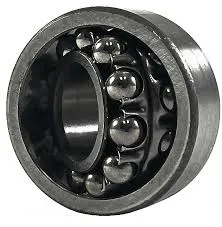
Dec . 20, 2024 23:57 Back to list
deep groove ball bearing hs code
Understanding Deep Groove Ball Bearings and Their HS Code
Deep groove ball bearings are one of the most widely used types of rolling bearings, characterized by their ability to support both radial and axial loads. Their simple design, high durability, and versatility make them an essential component in many mechanical systems, from electric motors to automotive applications. Understanding the HS (Harmonized System) code for deep groove ball bearings is crucial for manufacturers, traders, and importers as it affects tariffs, trade compliance, and logistic operations.
The HS code for deep groove ball bearings falls under the heading of bearings in the international shipping framework. Typically, they are categorized under HS Code 8482, which pertains to “ball bearings, roller bearings, and parts thereof.” The exact classification might vary slightly depending on specific features of the bearings, including dimensions, materials, and intended applications.
What is the Harmonized System (HS)?
The Harmonized System (HS) is an international nomenclature for the classification of products used by customs authorities around the world. It was developed and is maintained by the World Customs Organization (WCO). The HS code is critical for international trade as it helps in uniformity in the classification process and ensures that trade statistics can be effectively gathered and analyzed.
Importance of HS Code in Trade
When importing or exporting deep groove ball bearings, the correct HS code ensures compliance with customs regulations. Misclassification can lead to delays in shipment, fines, or additional tariffs. For businesses involved in international trade, understanding the HS code is important in pricing strategies and market access. It helps in identifying trade agreements and tariffs that may affect the cost and profitability of importing and exporting these components.
deep groove ball bearing hs code

Characteristics of Deep Groove Ball Bearings
Deep groove ball bearings are known for their deep raceway grooves that allow for smooth operation at high speeds. They can accommodate both radial and axial loads, making them suitable for a wide range of applications. Key features include
1. Versatility They can be used in various applications, including machinery, automotive components, and household appliances. 2. Cost-Effectiveness Due to their widespread use and manufacturing process, they are generally more affordable compared to other bearing types.
3. Lubrication They can be easily sealed or shielded to retain lubrication, which enhances their performance and lifespan.
4. Adaptability Available in a variety of sizes and qualities, they can meet specific application requirements.
Conclusion
In summary, deep groove ball bearings play a vital role in various industries due to their operational efficiency and reliability. Proper understanding and application of their HS code is essential for anyone involved in their trade. It ensures that businesses adhere to international guidelines and minimizes potential legal complications. Through well-informed practices, companies can optimize their operations in the global market. As the demand for efficient, high-performance components continues to grow, familiarity with both the physical characteristics and trade regulations surrounding deep groove ball bearings will remain a priority for industry stakeholders.
Latest news
-
Premium Deep Groove Ball Bearings | High Speed & Reliability
NewsAug.29,2025
-
Durable Scaffolding Clamps - Secure & Reliable Tube Connectors
NewsAug.28,2025
-
Common Failures in Thrust Ball Bearings and Solutions
NewsAug.22,2025
-
How Tapered Roller Bearings Can Take Shock Loads
NewsAug.22,2025
-
Angular Bearings in High-Precision Spindles
NewsAug.22,2025
-
The Impact of Misalignment on Cylindrical Roller Bearing Performance
NewsAug.22,2025
